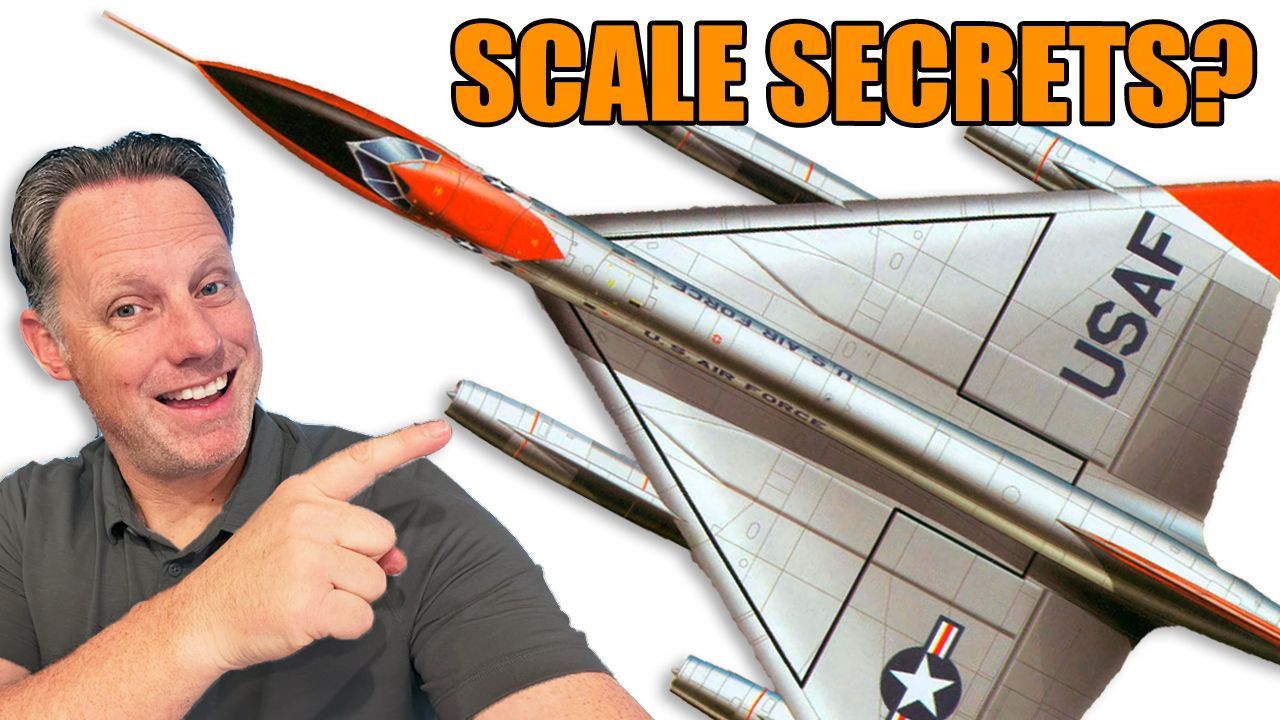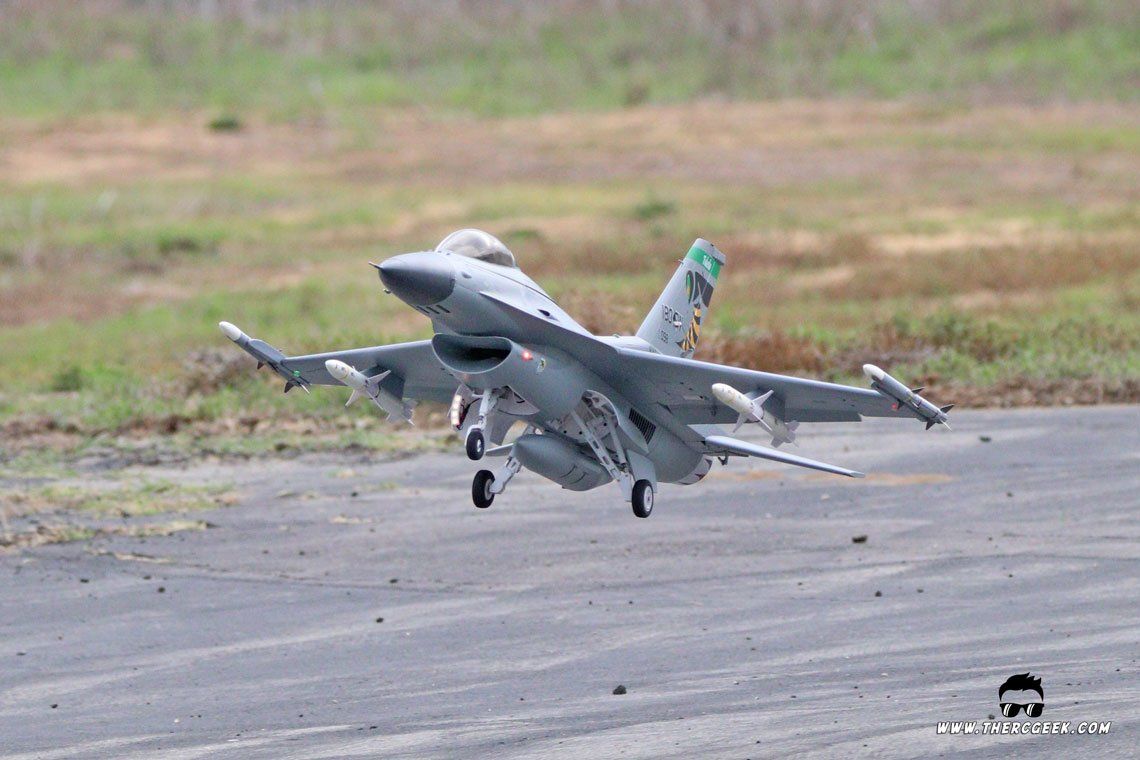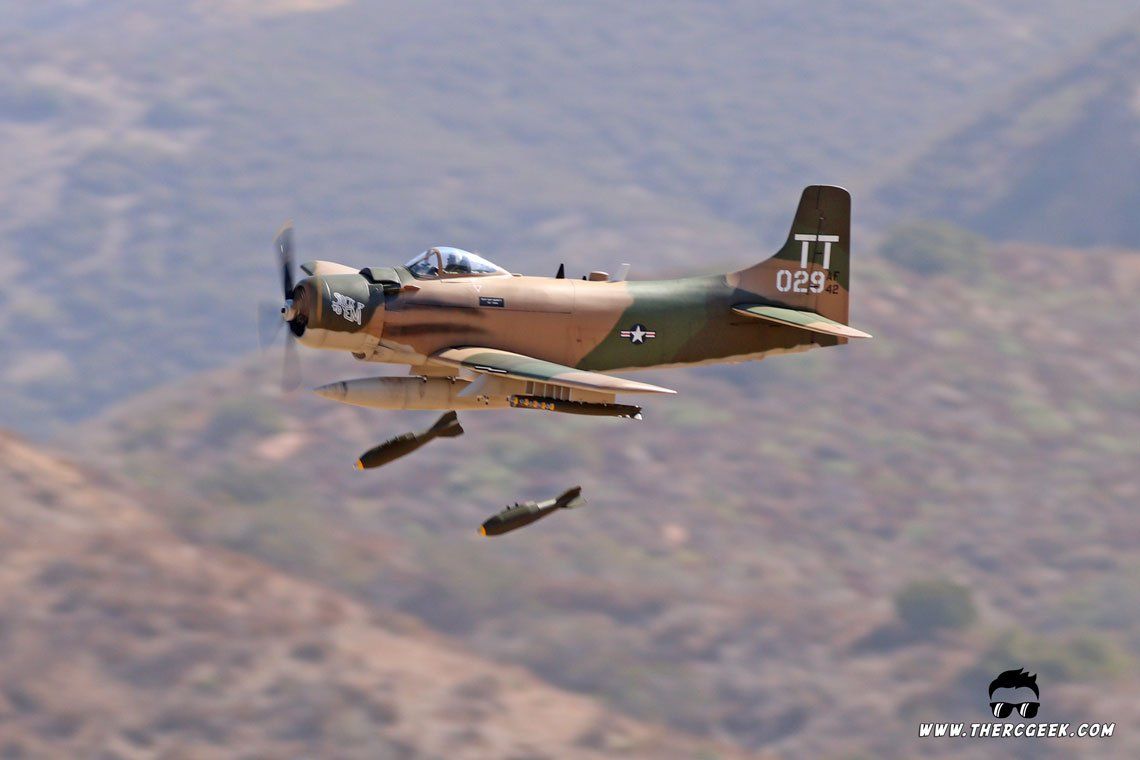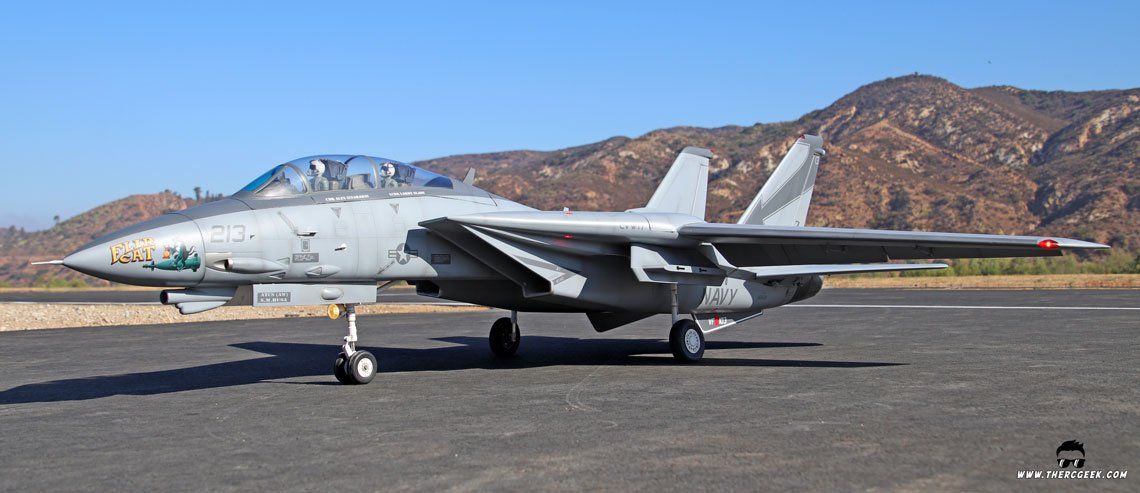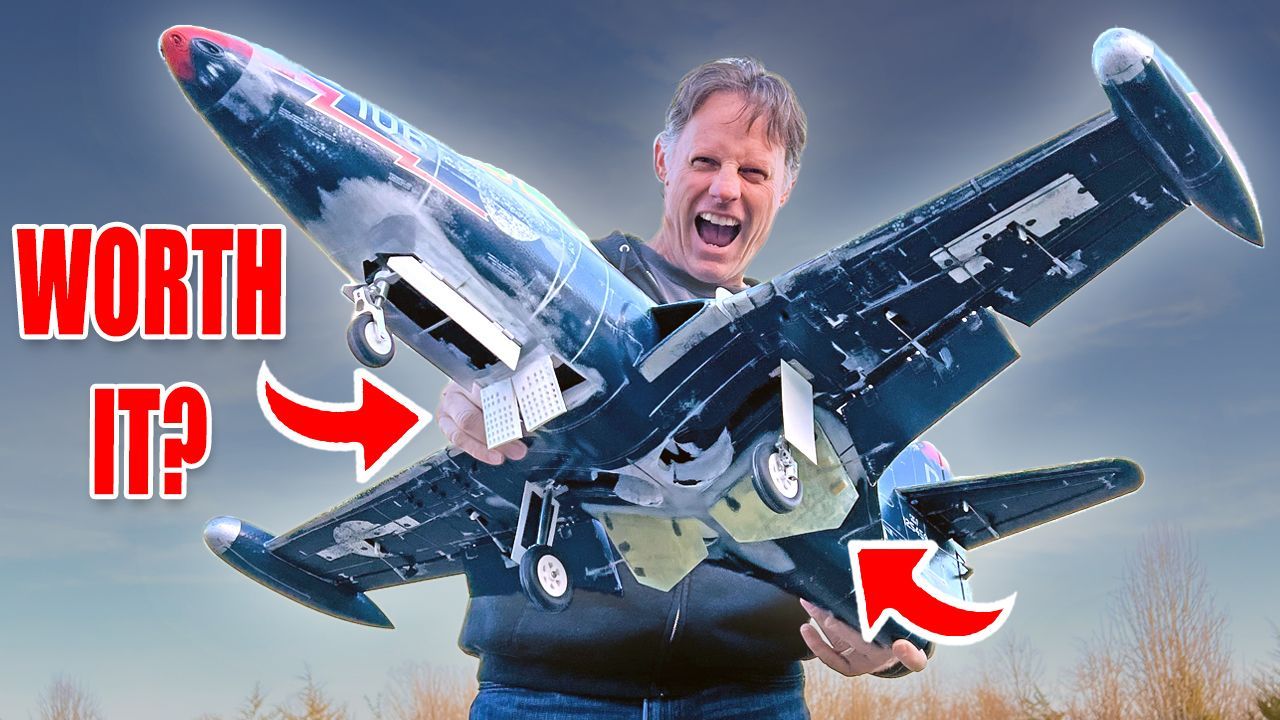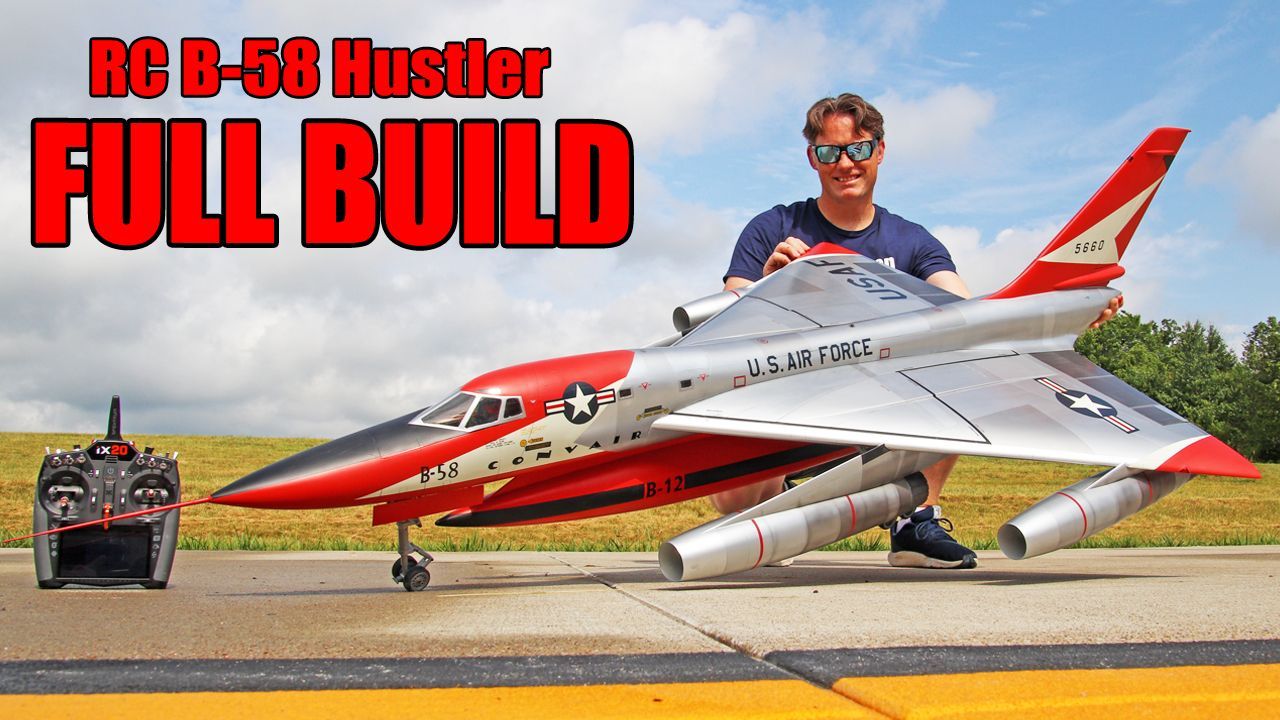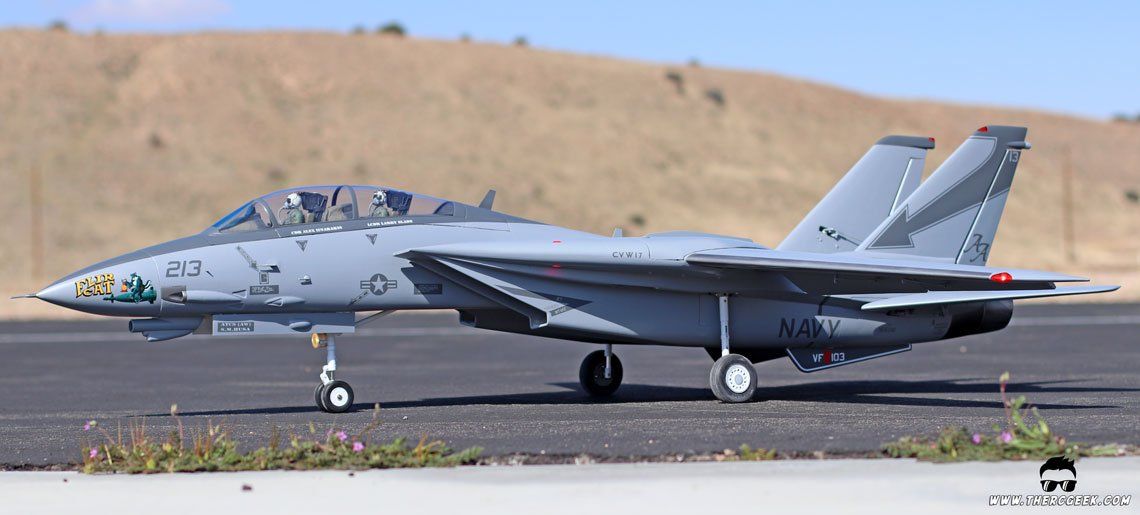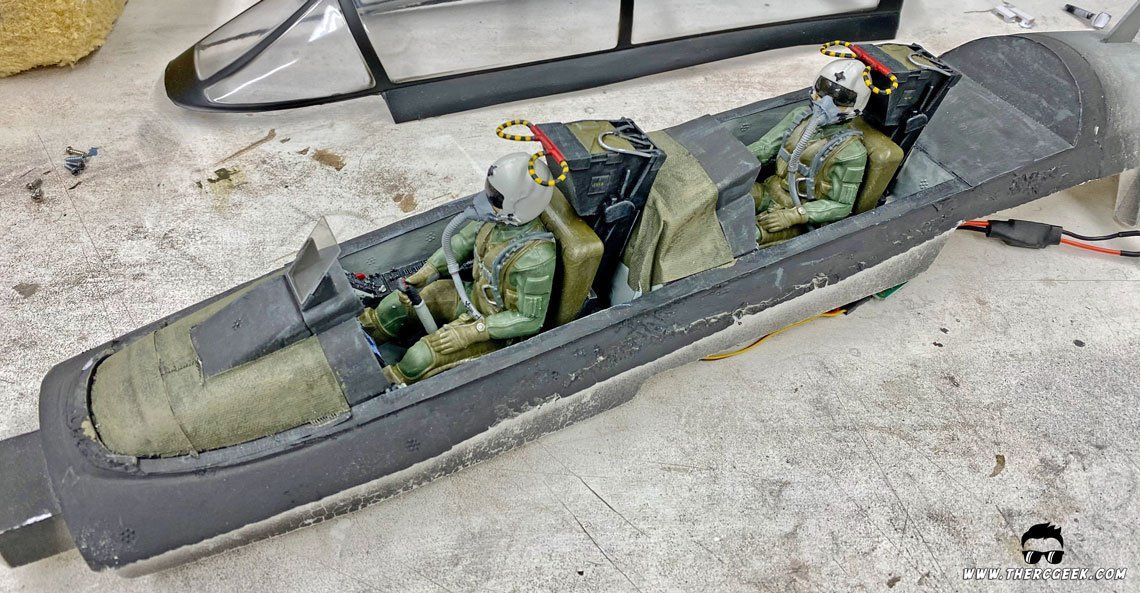The RC Geek Blog
By: Chris Wolfe
Another Grumman Cat? Heck YES!
When I learned about the new FlightLine RC F7F-3 Tigercat coming to market, I knew that it was going to be a must have for me! At 1600mm wingspan, the size is great being able to transport in one piece reasonably with a price that is pretty hard to beat for what you get. The truth is, the Tigercat has always been a favorite of mine. There’s just something about two Pratt & Whitney Double Wasp engines singing through the air while pulling around the skinniest airplane you can fit a pilot into that screams awesomeness! The cool thing with this model too is that it is in fact officially licensed by Northrop-Grumman and was designed from much of the original Grumman data. So, it doesn’t get much more scale than that; pulling the airplane from the box, there’s definitely no disputing the shape on it!
I hate to say it, but this is actually Tigercat #2 in my hangar. In case you missed it, a while back I put together a discussion on How to Setup Multi-Electrics
and the subject of that article was an 82″ wingspan ASM Tigercat
which flies incredible. Well, spoiler alert, this FlightLine RC F7F-3 Tigercat
flies just as sweet!
ASSEMBLY REVIEW
For the size of the airplane, the FlightLine RC F7F-3 Tigercat actually comes in a reasonably sized box. They’ve done a good job at reducing it down and getting it into a fairly compact shipping space. Pulling the airplane from the box, the parts count is nice and low. Essentially you have a two piece wing, a two-piece fuselage, two nacelles and propellers, a two piece horizontal stabilizer and all the necessary hardware to put the airframe together. All servos and landing gear (including doors) are pre-installed which is what you would expect from the FlightLine RC brand.
In putting the airplane together, it only requires a total of 16 fasteners. The first thing I did was to glue the rear vertical fin to the forward fuselage (I used 5 minute epoxy ). From there, I fastened the nacelles to the wings, then the wings to the fuselage and wrapped it up by fastening the horizontal stabilizer to the fuselage. Voilà, instant Tigercat! From there, I started the radio programming so as to drop the landing gear and I was pleasantly surprised with a nice looking set of landing gear and fully functioning landing gear doors. I do wish that the gear were shock absorbing (not a big deal) and the main gear strut covers were a little larger diameter just for scale appearance, but that is just a personal preference. As is, the gear covers on the wire struts look decent and the functioning gear doors are awesome…oh, and the tires are the correct size! With the basic programming done, I wrapped it all up by placing the markings onto the airframe. This was the first model programmed into my new Dx18 , so in terms of the full radio programming it took a little longer to program than typical as I got used to the programming. Even so, assembly only took a couple hours total including programming the radio. Note that I had to strong arm the horizontal tails a little bit to get the screw holes to line up correctly. Otherwise, assembly was very simple and straight forward. Also noteworthy is that the wing servos are all connected into an electronics board which reduces the multiple connections into a single multi-use cable on each wing. This works at really simplifying the servo setup. The only drawback is that there are 4 servos for the 4 flap segments, so you don’t have any individual adjustment of the servos. I noticed an asymmetry between the left outer flap element not deflecting as much (only 3-4mm). That said, I flew it as it was and it was no issue at all.
Now what really struck me the most about the airplane was the shape, it really is beautiful. All the right curves in all the right places and they’ve got some really nice details added in too including every exhaust pipe in the nacelles! The paint is nicely done with accurate color which really helps the looks too. Also, the kit has a nice selection of markings to choose from which is a nice touch. They are a vinyl type sticker with no carrier film that have a satin sheen to them. So, when placed on the airframe, it looks very much like paint. Plus, if you don’t like what’s provided in the box, Callie-Graphics has released some additional markings.
I did have a couple small blemishes out of the box, but nothing too out of the ordinary really (I’ve never seen a perfectly pristine foam airframe out of the box) and they were small (no shipping damage that I noticed). By the time I was done assembling it, I had added a few of my own dings anyhow…curse these heavy hands! I figure I’ll do a little weathering at some point, so it’ll all just be part of the character.
I figure I’ll do a little weathering at some point, so it’ll all just be part of the character. I did add some exhaust stains which was done using an IWATA double action airbrush
and some very thinned out Dark Earth paint. Quick and dirty, nothing too crazy.
I did add some exhaust stains which was done using an IWATA double action airbrush
and some very thinned out Dark Earth paint. Quick and dirty, nothing too crazy.
As I mentioned earlier, I wasn’t crazy about the main gear strut diameter. So, I designed and 3D Printing some strut covers. They definitely help reduce the chicken leg appearance. I do have them available through my 3D Printed Products page if you’d like a set!
AIRCRAFT SETUP & CG
The recommended batteries for the Tigercat are 2x 4s 3000-4000 mah packs. I went with the 3600mah Admiral packs from MotionRC which are some really good packs. I also picked up a set of nano-tech 4000s as well which fit perfectly within the airframe. I even looked at what it would take to install some 4s 5800s since I have a number of those for my ASM Tigercat but I didn’t have much luck with that install based on the size of the packs.
The CG provided in the manual is a great starting point and is stated as 73mm as measured from the wing root leading edge aft. Based on the location of the batteries having one forward and one aft on the trays in the fuselage, it provides a bit more of a forward CG which I first flew the airplane with. I moved the packs back a little bit to where I’m currently flying it which is at about 70mm as measured from the wing root leading edge aft. I didn’t bother moving the CG further back as the airplane flies great at this location with minimal down elevator needed in the inverted.
For the control throws, the setup was really easy and straight forward. For the first flight, I set up triple rates with the throws in the manual as my max rates. From there, I set two lower rates (I ALWAYS setup multiple rates, especially for a maiden). In flying the airplane, I found their max rates a bit too high for my liking and so ultimately switched down to what I had set as the mid rate elevator and low rate aileron which equates to the throws below:
Elevator – 11/16″ with 15% expo
Aileron – 5/8″ with 10% expo
Rudder – 1-1/8″ with 25% expo (expo is to tone down the nose steering since they’re tied together)
Flaps – 7/8″ mid flap, 1-3/4″ full flap with 10% down elevator mix (equates to 3/16″ at full flap)
FLYING THE FLIGHTLINE RC F7F-3 TIGERCAT
Flying the Tigercat is awesome! This airplane is super stable and rock solid in the air and really doesn’t exhibit any bad habits that I could find. The airplane has good speed and vertical performance at full throttle, but still slows down to a crawl with the flaps down. It has great presence in the air too providing a wonderful homage to the real deal as it flies. All that’s missing is the sound of those double wasp radials! I find myself flying the airplane at mostly full throttle as this gives very scale like performance and provides good penetration for aerobatics. It really maneuvers just like the real one. Flight times are easily over 6 minutes when flying at mostly full throttle, so that’s nice. One could easily extend to much longer by mixing in some slow speed passes.
Now, if I had one wish it would be that the airplane had just a little more grunt at full throttle. This would offer throttling back while still maintaining a good maneuver speed at partial throttle and then allowing a little more pull at full throttle for larger vertical maneuvers. It’s just a personal preference for my style of flying though. That said, the stock power system flies the airplane great and really is plenty of power.
Many thanks to my friend Air-Jon for helping out with the pictures and video!
FINAL THOUGHTS
The FlightLine RC F7F-3 Tigercat
is an absolute sweetheart of an airplane. MotionRC
has really done a fantastic job with this model as she looks and flies great! And, what you get for the price is pretty crazy. Frankly, I don’t even know how they do it. It really is nice to see a well done Tigercat realized on the market. It’s been needed for a while for us crazy Grumman Cat fans!
As we sign off, don’t forget too, I’ll be presenting at the AMA West Expo next month! So, come on out and say hi and enjoy an awesome tradeshow! As a part of that we have a giveaway going on until Jan 10, 2017. We’re giving away the Eleven Hobby F8F Bearcat we reviewed a while back. Check out my announcement post to enter!
The post FlightLine RC F7F-3 Tigercat Assembly & Flight Review appeared first on The RC Geek.
The RC Geek Blog is your place to learn about all aspects of the RC hobby. Learn to build, design, drive or fly that RC project you’ve always wanted to build, but have been intimidated to try. This blog is here to help you on your journey and provide tips and tricks as you go! My hope is to inspire builders both experienced and new! So, welcome, please look around, it’s an exciting beginning! I’m currently documenting my latest competition scale RC jet build, a Mark Frankel F4D Skyray, along with some other fun tips and videos. If you can’t find what you’re looking for on this front page, click on any of the categories to the right and it will show just posts related to those categories. Please feel free to add comments and/or contact me directly if you have questions, I’m here to help! And don’t forget to check out my YouTube Channel, I post new videos every week!
Subscribe To Our Blog Now
